My 10 years on Mars: NASA’s Curiosity rover describes its adventure
The rover has spent the past decade trying to figure out if Mars might have supported life

The Curiosity rover (seen here in a selfie taken on May 12, 2019) has spent the past decade exploring a small corner of Mars. One of its main scientific missions has been looking for evidence of past life on the Red Planet.
NASA/JPL-Caltech/MSSS
Share this:
- Share via email (Opens in new window) Email
- Click to share on Facebook (Opens in new window) Facebook
- Click to share on X (Opens in new window) X
- Click to share on Pinterest (Opens in new window) Pinterest
- Click to share on Reddit (Opens in new window) Reddit
- Share to Google Classroom (Opens in new window) Google Classroom
- Click to print (Opens in new window) Print
In many ways, Mars is like Earth’s twin. It’s about the same size. There’s ice at both its poles. The Red Planet also has four seasons as Earth does. And there are volcanoes, windstorms and even little dust devils similar to those you might see on a gravelly road.
But in many more ways, Mars is nothing like Earth. Mars had two moons, Deimos and Phobos. Most of the ice at is poles is made of water, but some of it is made out of frozen carbon dioxide. The Martian atmosphere is very thin. In fact, it contains so little oxygen that creatures from Earth could not survive on its surface without a lot of help.
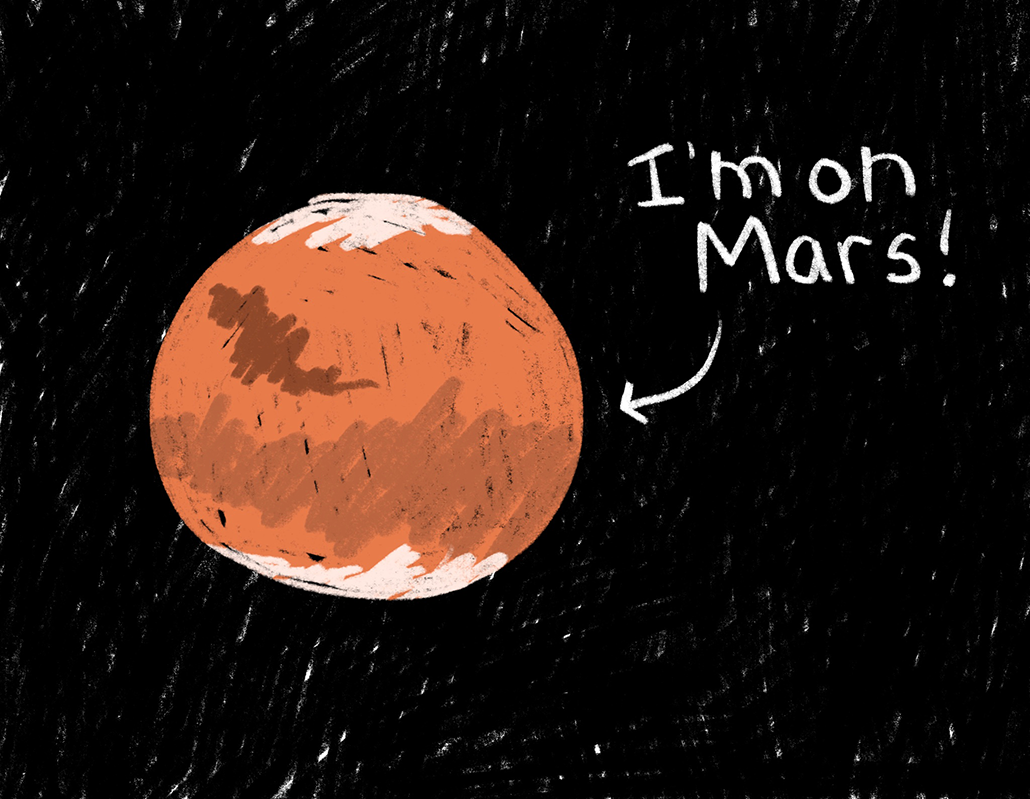
No human has traveled to Mars — yet. But spacecraft have been exploring the Red Planet for decades. That’s how we know that Mars was once a watery world. It had lakes, seas, rivers and oceans. Now those are all gone. But what happened to Earth’s twin? And most mysteriously, did life once exist on the Red Planet?
On August 5, 2012, NASA’s Mars Science Laboratory — better known as the Curiosity rover — landed on Mars. Its mission: to figure out whether Mars was once a place where living things could survive. The Curiosity mission was supposed to last only a single Mars year, the equivalent of 687 days on Earth. But the rover is still exploring more than 10 years (that’s five Martian years) later!
So what has Curiosity been up to? We’ll let the rover take it from here.
Hi everyone! I’m so excited to tell you about my adventures.
Follow the water
I started my journey in a place called Gale Crater. It’s a huge crater, stretching 154 kilometers (96 miles) wide. In the center is a mountain called Mount Sharp. NASA told me to land here because planetary scientists thought Gale Crater used to hold a lake filled with water. The Mars Reconnaissance Orbiter and other spacecraft had taken pictures that showed features that looked a lot like old, dried-up lakes on Earth.
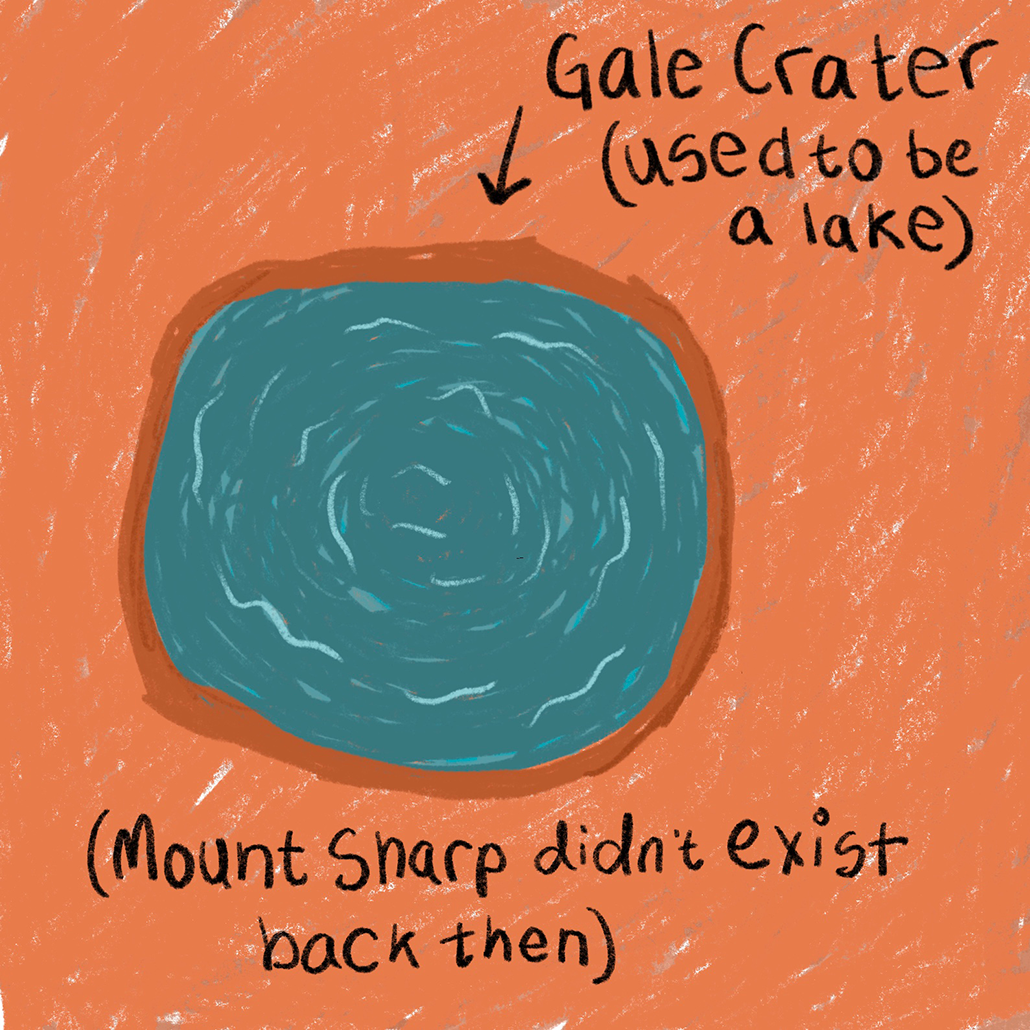
After I got here, I analyzed some rocks in Gale Crater with my onboard instruments. And I found minerals that had water locked up in their crystal structure.
With the data I collected, the science and engineering teams back on Earth “were able to confirm that Gale Crater was a lake,” says Tanya Harrison. She’s a planetary scientist and Mars expert who works at a satellite data company called Planet Labs in San Francisco, Calif.
You’re probably thinking, who cares about water? But life, at least as we know it, needs water. On Earth, where there’s water, scientists always find life. So if we want to find out if Mars ever had life, it makes sense to go to where there used to be water.
Evidence in the rocks
Do you know what else most living things need? Oxygen! Lots of oxygen. On Earth, 21 percent of the atmosphere is oxygen. You’re breathing it right now. But on Mars, the atmosphere is almost entirely carbon dioxide. Only 0.13 percent is oxygen.
One of the tools I brought to Mars was a laser. I used it to study the composition of rocks and I found molecules called manganese oxides. These molecules contain the elements manganese and oxygen. Manganese oxides form where there’s a lot of oxygen.
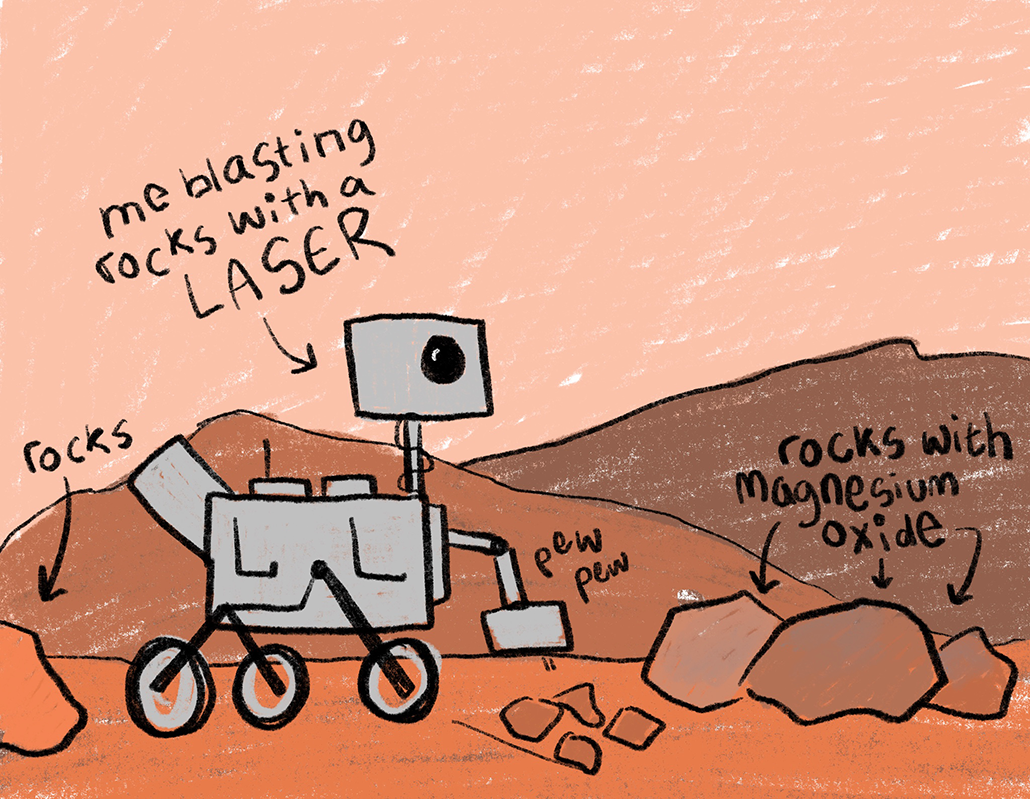
Harrison says my discovery of manganese oxide in Mars’s rocks tells scientists “that at some point in Mars’s past, there was a lot of oxygen in the atmosphere, which is great for most life as we know it.”
Where there was water and oxygen, there might have been life.
Big organic molecules
A few inches below Mars’s surface, I found something really exciting: pieces of big, organic molecules. You might have heard people describe food as “organic.” But in science, organic describes a molecule made of carbon and often hydrogen and oxygen. Some organic molecules also contain nitrogen or phosphorous.
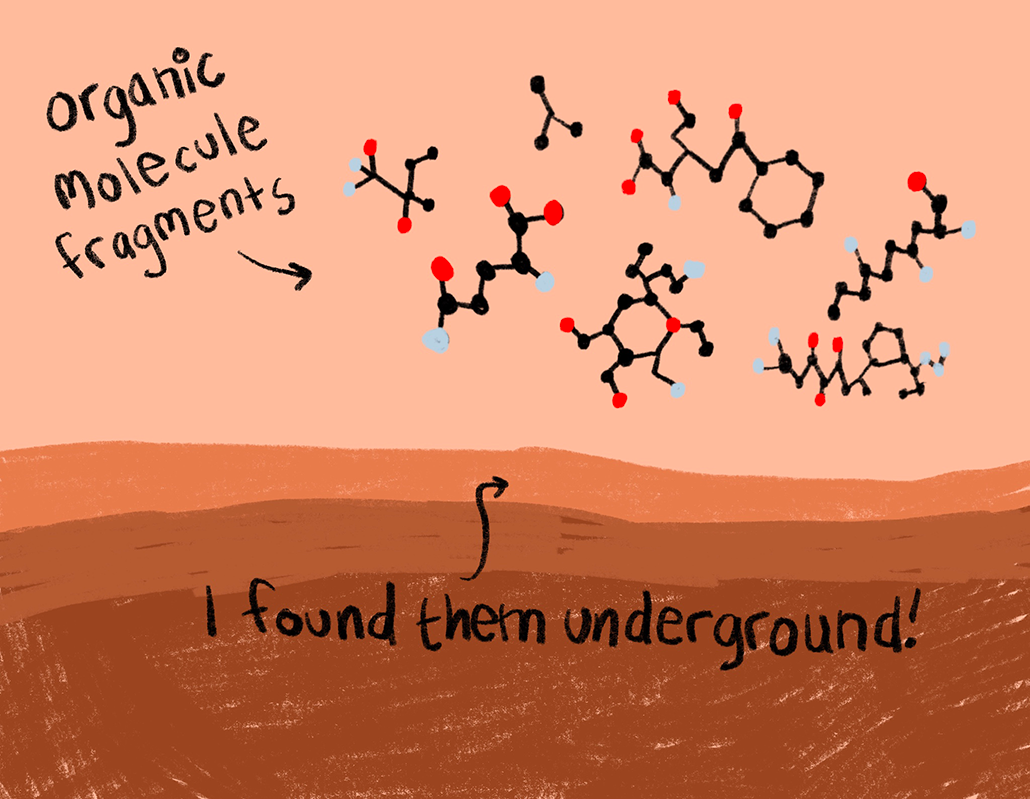
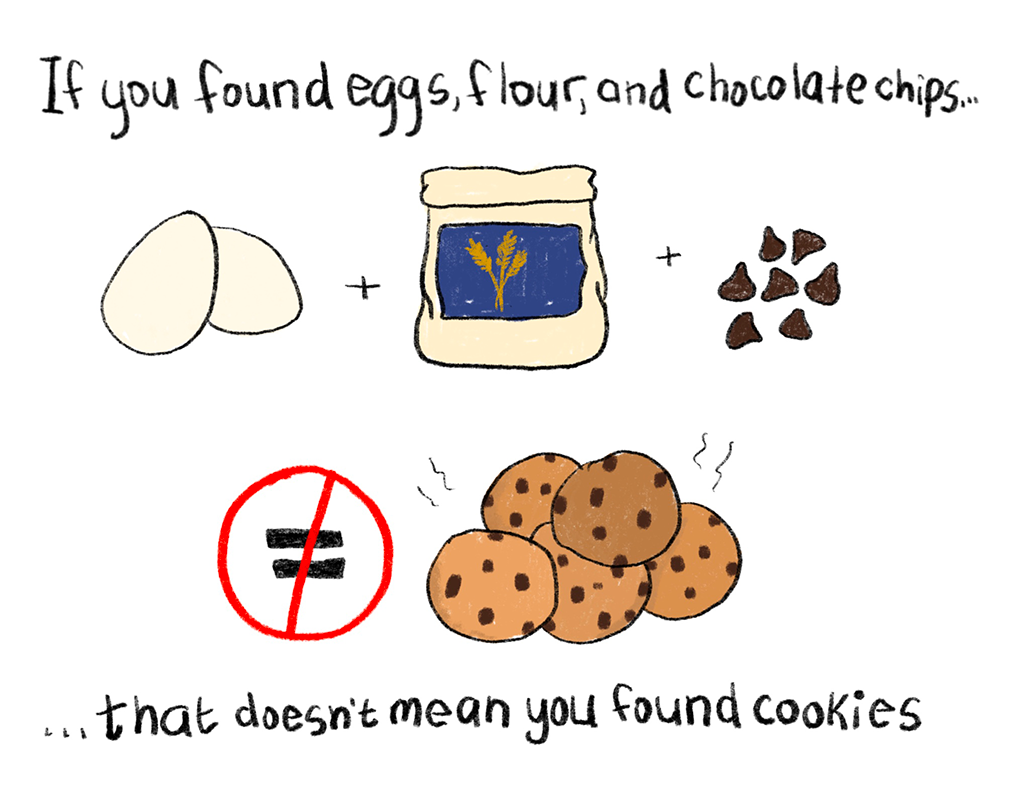
Your body, plus all other living things, contain many organic molecules. These molecules make up your cells, give you energy and more. So it’s pretty exciting that I found pieces of these molecules. But that doesn’t mean I found ancient life.
It’s sort of like if you opened your pantry door and found eggs, flour and chocolate chips. A chocolate chip cookie could be made using those ingredients, but you didn’t actually find a cookie.
Up in the air
Speaking of organic molecules, I keep sensing a gas called methane in Mars’s atmosphere. Methane is a small, organic molecule made from a carbon atom and four hydrogen atoms.
On Earth, there are only a few ways to get methane, Harrison says. Methane can come from living things, like cow burps and some farts. There are also some microbes that make methane. That’s why detecting methane in Mars’s atmosphere is so intriguing. What if there are microbes just underneath Mars’s surface making methane?
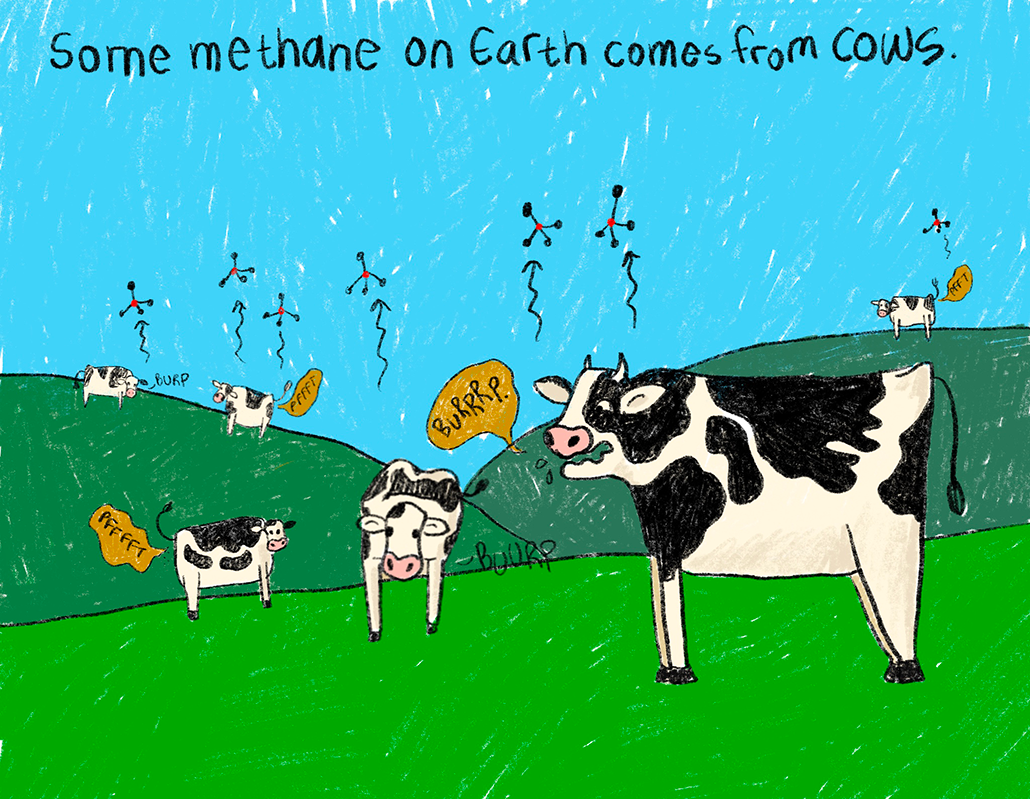
But before you get too excited, methane can form other ways, too. And they don’t all involve life. For example, when certain rocks interact with water, they trigger a geological process. Called serpentinization (Sur-PEN-tin-eye-ZAY-shun), it turns those rocks turn into a mineral called serpentinite. Along the way, this process releases methane.
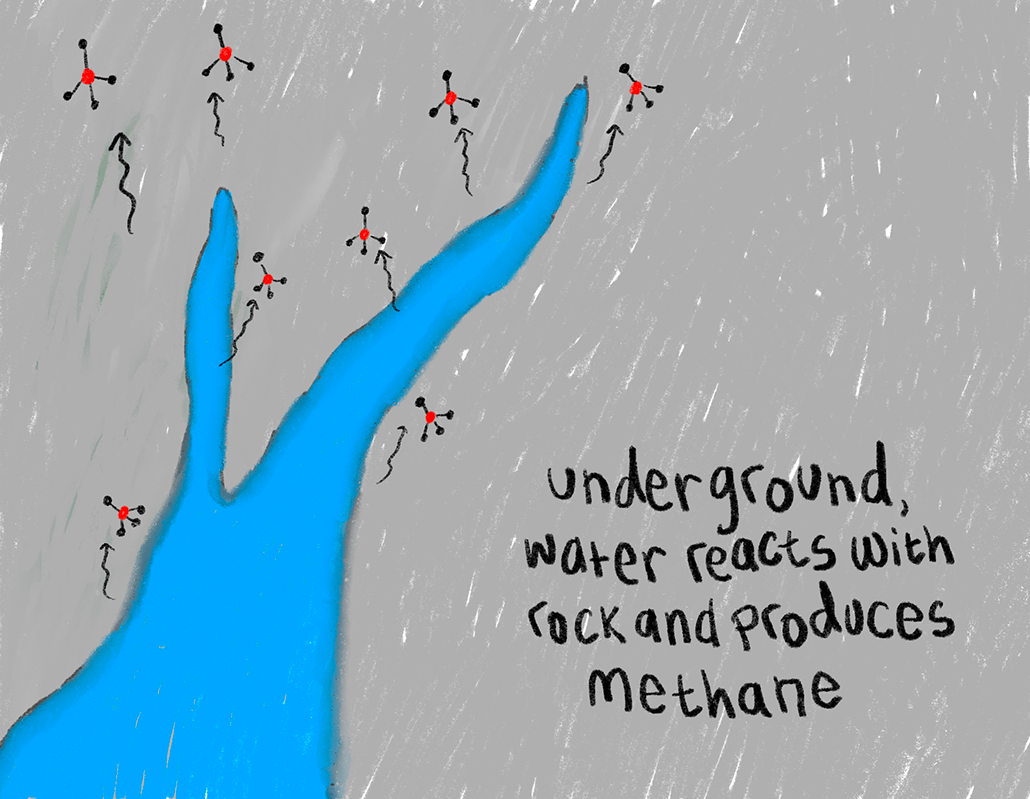
Scientists think that rocks deep, deep under Mars’s surface might be interacting with — you guessed it — water! So even if microbes aren’t creating Mars’s methane, knowing there might be water under the surface still gives us hope.
My mission isn’t over yet. I plan to keep exploring for years to come. But I’ve already done what I set out to do. I’ve shown that Mars was once a planet on which life could have evolved.
But don’t just take my word for it. Listen to Ashwin Vasavada. One of Curiosity’s lead scientists, he works at NASA’s Jet Propulsion Laboratory in Pasadena, Calif. He says my explorations have “revealed that all the conditions were right to support life about 3 billion years ago.” He adds that “we don’t know if life ever took hold on Mars, but it’s fascinating to know that Mars once had that chance.”
By the way, even when I’m done investigating, you’ll still be learning more about Mars. My cousin, a rover called Perseverance, landed on Mars in February 2021. And a Chinese rover named Zhurong started its explorations the following May. We’re just the latest in a series of space robots to explore the Red Planet. And there are more to come.






